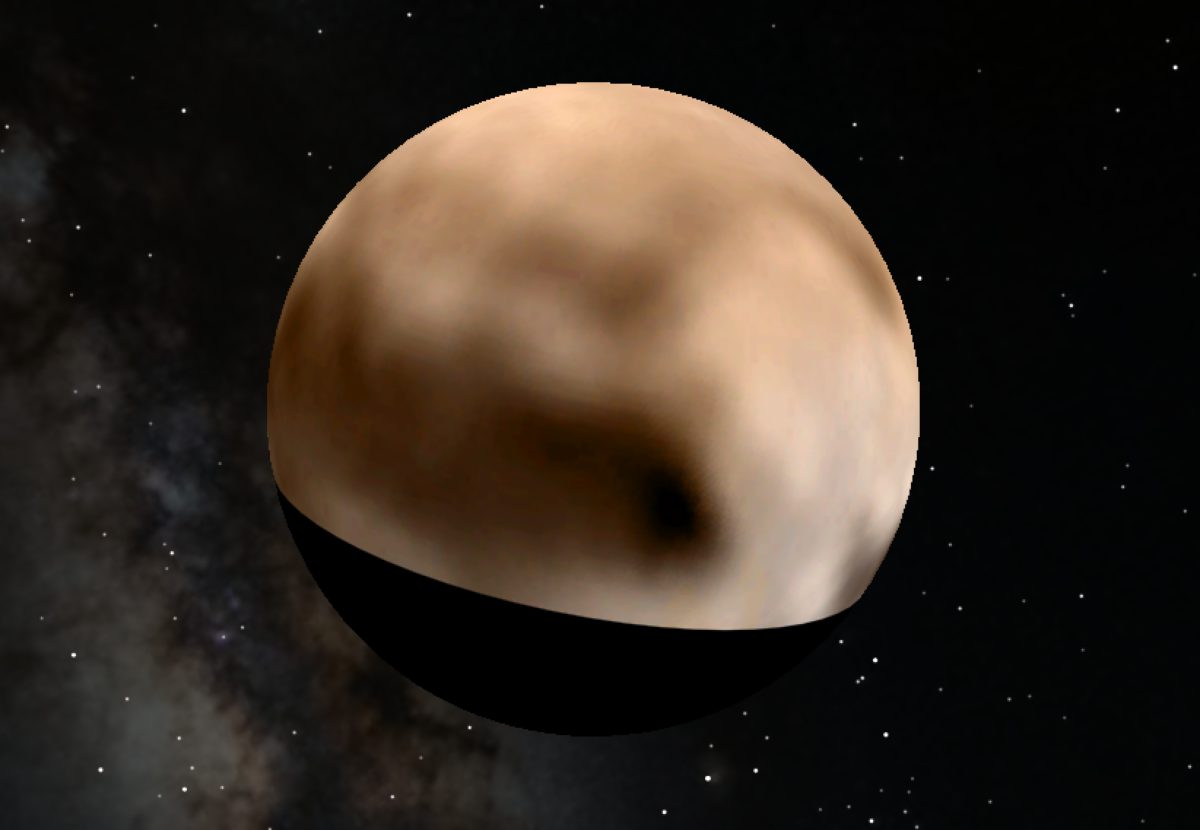Alex Parker • Jul 08, 2015
Explore Pluto in Google Earth!
The Pluto encounter team is working furiously to prepare for flyby and analyze new data as it comes down from the spacecraft. One of the chief ongoing activities is producing the first maps of Pluto using images collected by New Horizons.
Because of the approach trajectory that New Horizons is on, not all of Pluto is visible to the spacecraft yet. As such, our first maps include all of Pluto's northern hemisphere, but only part of Pluto's southern hemisphere.
We've made a version of our current maps for use in Google Earth. You can now easily download the map and explore the best Pluto maps ever made! You can find the Google Earth map here.
Map Data
The map is made with data from two of New Horizons instruments. The highest-resolution imager that New Horizons carries is LORRI, which only collects black-and-white images. The color imager is MVIC (part of the Ralph instrument), which collects lower-resolution images in multiple color filters.
We used the high-resolution images from LORRI to create a panchromatic reflectance (albedo) map, and overlaid a lower-resolution color map over it.
These maps will rapidly improve as we continue to approach Pluto over the coming days
Map in Google Earth
Since this is an image overlay for Google Earth, the underlying size of the planet is incorrect - sizes and distances on the map are not to proper scale for Pluto. However, a fun side effect of this is that Earth locations are searchable and comparable to the latitudes and longitudes of features on the Pluto map. This means if you search for your home address and zoom in, you can see the latitude and longitude that your house would be on Pluto. What kind of terrain might surround your Plutonian vacation home?
Here There Be Dragons - But Not For Long!
The portion of the map that remains blank will be filled in as New Horizons rounds the far side of Pluto after its close flyby. The south pole of Pluto is currently in the midst of decades-long polar darkness; with no sunlight falling directly on the landscape, New Horizons will instead use light from Charon to illuminate the terrain in its images.
I for one can't wait to see what Charon-shine reveals in the long polar night.
Support our core enterprises
Your support powers our mission to explore worlds, find life, and defend Earth. You make all the difference when you make a gift. Give today!
Donate

 Explore Worlds
Explore Worlds Find Life
Find Life Defend Earth
Defend Earth


